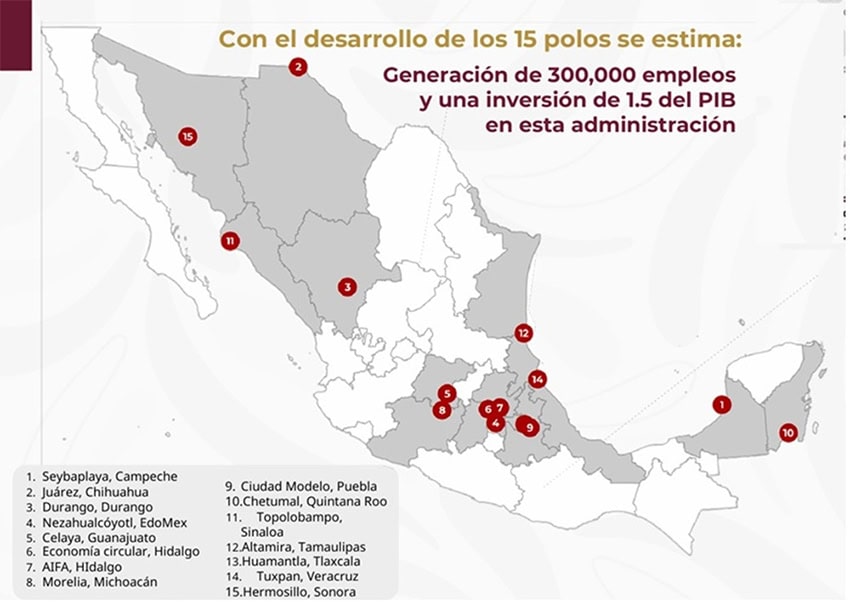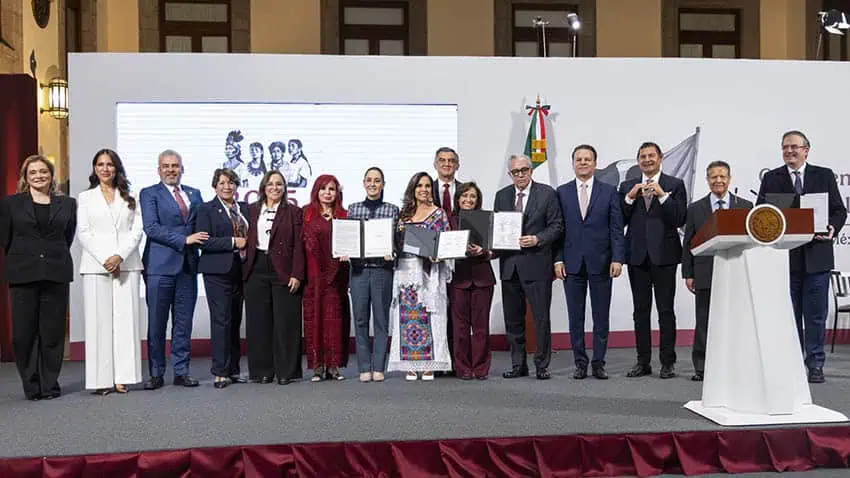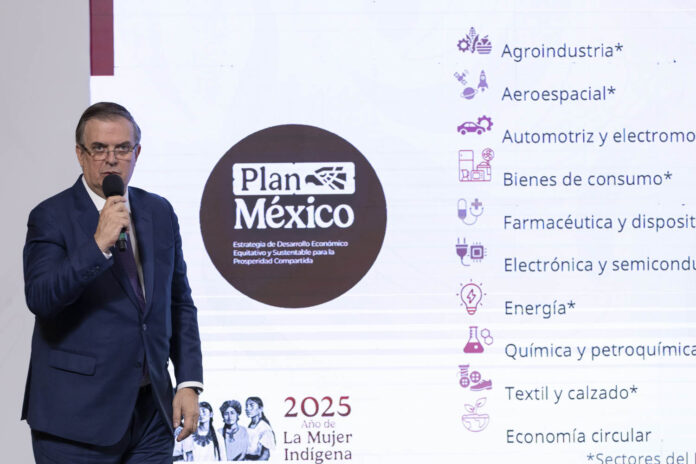President Claudia Sheinbaum on Thursday signed agreements with 14 governors to establish the first 15 Economic Development Hubs for Well-being (Podecobis), a key facet of the government’s flagship Plan México policy. She also announced substantial tax incentives and plans for infrastructure projects to support hub development.
“Plan México is advancing; there is a lot of coordination and unity in our country with governors helping move Mexico forward,” Sheinbaum said, according to a press release.

Plan México is an ambitious economic plan whose goals include making Mexico the 10th largest economy in the world, reducing reliance on imports from China and other Asian countries and creating 1.5 million new jobs.
During the signing ceremony, Sheinbaum said letters of intent signed by state governors demonstrate broad support across the country, adding that her administration’s initial goal is to build the infrastructure and industrial parks necessary to get the Podecobis, or hubs, up and running quickly.
“One of Plan México’s central pillars to strengthen domestic and foreign investment is to organize investment into clusters … of development, primarily industrial, but also services and tourism,” Sheinbaum said. “These development hubs will attract investment from manufacturing and service companies, while also stimulating the construction of housing, schools and hospitals.”
The promotion of these hubs aims to prevent disorganized development processes that leave sources of employment far from the places where workers live, Sheinbaum said, while urging the governors to swiftly get through the red tape necessary to establish the hubs.
Los primeros 15 Polos de Desarrollo Económico para el Bienestar del Plan México permiten desarrollar industria, servicios y turismo, a través de inversión nacional y extranjera. Lo más importante es garantizar empleo, vivienda, escuelas y hospitales en todas las regiones. Es… pic.twitter.com/LQSsak5uNY
— Claudia Sheinbaum Pardo (@Claudiashein) June 27, 2025
The sites of the initial 15 hubs are: Seybaplaya, Campeche; Ciudad Juárez, Chihuahua; Durango city, Durango; Nezahualcóyotl, México state; Celaya, Guanajuato; Morelia, Michoacán; Ciudad Modelo, Puebla; Chetumal, Quintana Roo; Topolobampo, Sinaloa; Altamira, Tamaulipas; Huamantla, Tlaxcala; Tuxpan, Veracruz; Hermosillo, Sonora; an area stretching from the Felipe Ángeles International Airport in México state to Tizayuca, Hidalgo; and, the area known as the Circular Economy of Hidalgo (near the city of Tula).
Governors of the corresponding states — including 11 members of the ruling Morena party, two from the National Action Party (PAN) and one from the Institutional Revolutionary Party (PRI) — signed a letter of intent, demonstrating their support for the project.
Sheinbaum said this is just the first phase of the Podecobis program. “We will continue working with other states and their governors in regions that are equally important (to Mexico’s development),” she said.
Economy Minister Marcelo Ebrard said the priority of the hubs is to concentrate the efforts of federal and state authorities to boost economic activity and promote shared prosperity. The government expects the 15 hubs to create roughly 300,000 jobs.

The hubs aim to foster territorial development throughout the country, link productive processes, support small and medium-sized enterprises (SMEs) and increase national content. The hubs also aspire to meet the environmental, natural resource, energy and infrastructure requirements found in different parts of the country.
The strategy is implemented geographically through economic development corridors within which the hubs are concentrated. These regional corridors are designed to attract investment aligned with local strengths, while the hubs are defined areas where the government offers tax incentives to facilitate industrial growth. These initiatives are aimed at key sectors including automotive, aeronautics and pharmaceuticals.
The incentives for investing in the Podecobis, Ebrard explained, include a 100% immediate deduction on investment in new fixed assets, a 25% deduction for training programs and an additional 25% deduction for supporting research and development initiatives.
Ebrard said the initiatives are aimed at key sectors including automotive, aeronautics, pharmaceuticals, agribusiness, consumer goods, electronics and semiconductors, energy, chemicals and petrochemicals, textiles, footwear and the circular economy.
With reports from El Economista, Eje Central and El Universal
